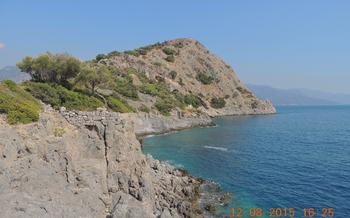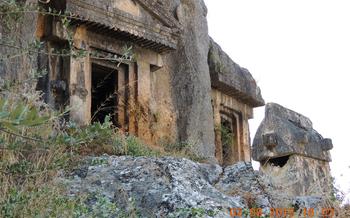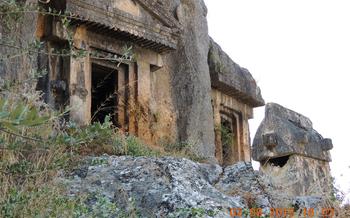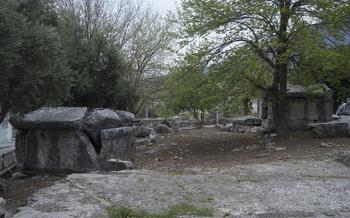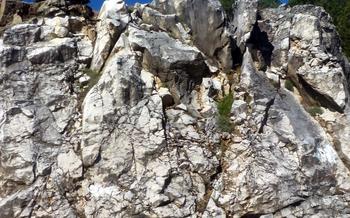
Amyntas Rock Tombs
- Journey through History: Exploring the Amyntas Rock Tombs
- Historical Significance of the Tombs
- Unique Architectural Features
- Importance of the Lycian Civilization
- Impact on Modern Understanding of Ancient Cultures
- Location: A Scenic Retreat in Ölüdeniz
- Unveiling the Lycian Legacy: A Glimpse into Ancient Civilizations
- Architectural Marvels: Unraveling the Design and Structure
- The Ultimate Guide: Exploring the Tombs
- Unveiling the Mystery: Deciphering the Tomb Inscriptions
- Nature's Embrace: Admiring the Surrounding Landscape
- A Journey to the Past: Historical Significance and Context
- Preserving the Legacy: Conservation Efforts and Challenges
- The Lycian Trail: Exploring Beyond the Tombs
- Capturing Memories: Photography and Videography Guidelines
- Local Cuisine: Savoring the Flavors of Ölüdeniz
- Accommodations: Rest and Relaxation in Ölüdeniz
- Insider Tip: Unveiling the Hidden Gem
Journey through History: Exploring the Amyntas Rock Tombs
Historical Significance of the Tombs
Nestled amidst the stunning landscape of Ölüdeniz, the Amyntas Rock Tombs stand as a testament to the rich history and cultural heritage of the ancient Lycian civilization. These impressive rock-cut structures, dating back to the 4th century BC, offer a glimpse into the lives and beliefs of this fascinating civilization. The tombs, carved into the sheer rock face, have survived the passage of time, providing valuable insights into Lycian funerary practices and artistic traditions.
Unique Architectural Features
The Amyntas Rock Tombs are renowned for their unique architectural features, showcasing the advanced engineering and craftsmanship of the Lycians. Each tomb consists of a main chamber, adorned with intricate carvings and decorative elements, and smaller chambers or niches for additional burials. The tombs are supported by massive columns and lintels, demonstrating the Lycians' mastery of stonework.
Importance of the Lycian Civilization
The Lycians were an ancient civilization that inhabited the southwestern coast of Anatolia, in present-day Turkey. They were known for their seafaring skills, their advanced culture, and their unique language and alphabet. The Amyntas Rock Tombs are among the most significant remnants of Lycian civilization, providing valuable clues about their history, culture, and religious beliefs.
Impact on Modern Understanding of Ancient Cultures
The discovery and study of the Amyntas Rock Tombs have had a profound impact on our understanding of ancient cultures. The tombs have yielded important archaeological evidence, including artifacts, inscriptions, and skeletal remains, which have shed light on Lycian burial customs, social structure, and artistic traditions. These findings have contributed to our knowledge of the ancient world and have helped to bridge the gap between the past and the present.
Location: A Scenic Retreat in Ölüdeniz
The Amyntas Rock Tombs are nestled in the picturesque town of Ölüdeniz, renowned for its stunning beach, crystal-clear waters, and breathtaking natural beauty. Situated just a short distance from the town center, the tombs offer a tranquil retreat from the bustling tourist scene. The proximity to Ölüdeniz beach, with its golden sands and turquoise waters, makes it an ideal destination for those seeking a combination of history and relaxation.
The tombs are easily accessible by road, with well-maintained roads leading directly to the site. For those relying on public transportation, regular buses and taxis operate from Ölüdeniz town, ensuring convenient access to the tombs. Once at the site, visitors can wander through the ancient ruins, marveling at the intricate carvings and absorbing the serene atmosphere. The tombs serve as an excellent starting point for exploring the surrounding area, including neighboring historical sites, charming villages, and scenic hiking trails.
Unveiling the Lycian Legacy: A Glimpse into Ancient Civilizations
The Lycians were an ancient civilization that inhabited the region of Lycia, encompassing parts of modern-day Turkey. They were known for their unique culture, language, and traditions, which have left a lasting impact on the region. The Amyntas Rock Tombs stand as a testament to the rich heritage of the Lycians, offering a glimpse into their way of life.
The Lycians were skilled navigators and traders, establishing a thriving maritime empire that connected them with various cultures across the Mediterranean. They were also adept at agriculture, utilizing the region's fertile land to cultivate crops and raise livestock. Their religious practices were influenced by both Greek and Persian cultures, resulting in a unique blend of beliefs and rituals.
The Amyntas Rock Tombs provide valuable insights into the funerary practices of the Lycians. These tombs were elaborately carved into the rocky cliffs, demonstrating their advanced engineering skills. The tombs contain inscriptions and carvings that depict scenes from Lycian mythology and daily life, offering a glimpse into their beliefs and cultural values.
As a cultural heritage site, the Amyntas Rock Tombs hold immense significance for understanding the ancient Lycian civilization. They serve as a reminder of the diverse and vibrant cultures that have shaped the history of the region, enriching our understanding of the past and inspiring future generations.
Architectural Marvels: Unraveling the Design and Structure
The Amyntas Rock Tombs stand as testaments to the architectural prowess of the ancient Lycians. Carved directly into the sheer rock face, these tombs showcase a unique and intricate style of rock-cut architecture. Each tomb features a meticulously designed façade adorned with intricate carvings and decorative elements. These carvings depict various motifs, including mythological scenes, animals, and funerary symbols, providing valuable insights into Lycian culture and beliefs.
The tombs' exteriors are complemented by their equally impressive interiors. Inside, visitors can marvel at the spacious chambers and corridors, which were carefully carved out of the rock. These chambers feature high ceilings, arched doorways, and niches that were likely used to store offerings and other funerary objects. The precision and attention to detail in the construction of the tombs are evident in every aspect, from the smooth, polished walls to the precisely cut doorways.
The Amyntas Rock Tombs are not only remarkable for their artistic beauty but also for their engineering ingenuity. The Lycians demonstrated advanced engineering techniques in the construction of these tombs, ensuring their durability and longevity. The tombs were carefully positioned to take advantage of natural rock formations, providing structural support and protection from the elements. The use of corbelled arches, a technique in which each successive layer of stone projects slightly over the one below, further enhanced the structural integrity of the tombs.
The Amyntas Rock Tombs stand as exceptional examples of Lycian rock-cut architecture. Their unique design, intricate carvings, and advanced engineering techniques offer a glimpse into the artistry, craftsmanship, and ingenuity of this ancient civilization. Comparing these tombs with other Lycian rock tombs in the region reveals both similarities and subtle variations, highlighting the diversity and richness of Lycian funerary architecture.
The Ultimate Guide: Exploring the Tombs
Venturing into the Amyntas Rock Tombs is a journey through time, offering a glimpse into the lives and beliefs of the ancient Lycians. The main tomb, known as the Tomb of Amyntas, stands as the centerpiece of the site. Its imposing façade, carved directly into the rock face, features intricate reliefs depicting various scenes from Lycian mythology and history. The interior of the tomb is equally impressive, with a spacious chamber adorned with decorative elements and inscriptions.
Surrounding the main tomb are several smaller tombs, each with its unique characteristics. These tombs vary in size and design, but they all share the same remarkable craftsmanship and attention to detail. Some of the smaller tombs feature elaborate carvings of animals, human figures, and religious symbols, providing valuable insights into Lycian culture and beliefs.
To make the most of your visit, consider exploring the site at your own pace or joining a guided tour. Guided tours are led by knowledgeable experts who can provide historical context and insights into the significance of the tombs and their inscriptions. They can also point out hidden details and answer any questions you may have.
As you navigate the site, remember to tread carefully and respect the fragile nature of the tombs. Avoid touching or leaning against the carvings and structures to prevent damage. By following these guidelines, we can all help preserve this ancient treasure for future generations to appreciate.
Unveiling the Mystery: Deciphering the Tomb Inscriptions
The Amyntas Rock Tombs are not only architectural marvels but also repositories of ancient knowledge and history. The inscriptions found within the tombs provide valuable insights into the Lycian civilization and their rich cultural heritage.
The Lycians developed their own unique alphabet, which is closely related to the Greek alphabet but has several distinct features. Scholars have spent years deciphering the Lycian inscriptions, and their efforts have shed light on the language, history, and culture of this ancient civilization.
The inscriptions in the Amyntas Rock Tombs provide information about the individuals who were buried there, including their names, titles, and family relationships. They also offer glimpses into Lycian religious beliefs and funerary practices. For example, some of the inscriptions mention the gods and goddesses to whom the tombs were dedicated, as well as the rituals that were performed to honor the deceased.
By studying the inscriptions, researchers have been able to gain a deeper understanding of the Lycian civilization and its place in the ancient world. The tombs themselves are a testament to the skill and artistry of the Lycians, and the inscriptions provide a window into their complex and fascinating culture.
Nature's Embrace: Admiring the Surrounding Landscape
The Amyntas Rock Tombs are not just a historical marvel but also a gateway to breathtaking natural beauty. Perched on a hillside, the tombs offer panoramic vistas of the surrounding landscape, painting a picture of natural splendor that will leave you mesmerized. Lush vegetation, diverse flora, and vibrant hues create a tapestry of colors that changes with the seasons. Take advantage of the opportunity to embark on hiking trails that wind through the picturesque surroundings, immersing yourself in the tranquility of nature. As the sun begins its descent, the tombs transform into a magical vantage point to witness spectacular sunsets. The sky bursts into a kaleidoscope of colors, casting a warm glow on the ancient structures and the surrounding landscape. Whether you're an avid hiker, a nature enthusiast, or simply seeking a moment of serenity, the Amyntas Rock Tombs offer an unforgettable experience that blends history and natural beauty seamlessly.
A Journey to the Past: Historical Significance and Context
The Amyntas Rock Tombs stand as a testament to the rich cultural heritage of the ancient Lycians. These tombs were not mere burial chambers but played a crucial role in Lycian society, serving as a physical manifestation of their beliefs and funerary practices.
For the Lycians, death was not an end but a transition to the afterlife. Elaborate rituals and ceremonies accompanied the burial process, ensuring the deceased's safe passage into the next realm. The tombs themselves were designed to reflect this belief, with intricate carvings and inscriptions that depicted scenes from mythology and daily life.
Over time, burial customs evolved, and the Amyntas Rock Tombs bear witness to this evolution. While earlier tombs featured simple designs, later ones showcased more elaborate architecture and ornamentation, reflecting the growing wealth and sophistication of Lycian society.
Archaeological discoveries at the site have shed considerable light on Lycian history, providing valuable insights into their social structure, religious beliefs, and artistic traditions. These tombs serve as a tangible link to the past, allowing us to glimpse into the lives and customs of this ancient civilization.
The Amyntas Rock Tombs stand as a reminder of the enduring legacy of the Lycians and the importance of preserving our cultural heritage. They offer a unique opportunity to explore the intricate tapestry of ancient civilizations and gain a deeper understanding of their beliefs and practices.
Preserving the Legacy: Conservation Efforts and Challenges
The Amyntas Rock Tombs, as a testament to ancient Lycian civilization, require ongoing preservation efforts to ensure their longevity and accessibility for future generations. Conservation projects focus on protecting the tombs from the elements, preventing further deterioration, and mitigating the impact of human activities.
One of the primary challenges in preserving the site is its exposure to natural factors such as wind, rain, and sunlight, which can cause erosion and damage to the delicate rock carvings. Conservationists employ techniques like water management systems, protective coatings, and regular maintenance to minimize the effects of these elements.
Another challenge lies in managing the impact of tourism. While the tombs attract a significant number of visitors, it is essential to strike a balance between accessibility and preservation. Controlled visitor flow, designated pathways, and educational signage help minimize wear and tear on the site while enhancing the visitor experience.
Collaboration between local authorities, archaeologists, and international organizations is crucial for effective conservation efforts. Ongoing research, documentation, and monitoring of the tombs contribute to a better understanding of their historical significance and the development of appropriate preservation strategies.
Responsible tourism practices play a vital role in preserving the Amyntas Rock Tombs. Visitors are encouraged to adhere to designated paths, refrain from touching or climbing on the tombs, and avoid littering or causing any damage to the site. By following these guidelines, tourists can contribute to the long-term preservation of this unique cultural heritage.
The Lycian Trail: Exploring Beyond the Tombs
The Amyntas Rock Tombs are a highlight of the Lycian Way, a renowned long-distance hiking trail that traverses the stunning landscapes of Turkey's Turquoise Coast. Stretching over 500 kilometers, the Lycian Way offers an unforgettable journey through history, culture, and natural beauty.
If you're an avid hiker and history buff, combining a visit to the tombs with a trek along the Lycian Way is an experience not to be missed. The trail passes through ancient ruins, picturesque villages, and breathtaking coastal scenery, providing a unique perspective on the region's rich heritage.
For those short on time, consider incorporating a day hike to the tombs from Ölüdeniz. The trailhead is easily accessible, and the moderate 6-kilometer round trip offers stunning views of the surrounding mountains and coastline. Remember to pack comfortable hiking shoes, water, and a camera to capture the unforgettable vistas along the way.
Capturing Memories: Photography and Videography Guidelines
Photography and videography enthusiasts can capture the essence of the Amyntas Rock Tombs and the surrounding landscape, but certain guidelines must be followed to ensure the preservation of the site and respect for other visitors.
- Regulations and Restrictions:
- Flash photography is prohibited inside the tombs to prevent damage to the delicate carvings.
- Tripods and other photography equipment may be restricted in certain areas to avoid obstructing pathways and disturbing other visitors.
-
Commercial photography and videography require prior permission from the authorities.
-
Recommended Camera Settings and Equipment:
- Use a wide-angle lens to capture the grandeur of the tombs and the surrounding scenery.
- Adjust your camera settings for low-light conditions, as the interiors of the tombs are dimly lit.
-
Bring a sturdy tripod to stabilize your camera for sharp shots, especially in low-light conditions.
-
Tips for Capturing the Essence:
- Experiment with different angles and perspectives to create unique and captivating shots.
- Incorporate the surrounding landscape into your compositions to showcase the tombs' integration with nature.
-
Capture the details of the intricate carvings and inscriptions to reveal the artistic prowess of the Lycians.
-
Respecting the Privacy of Others:
- Be mindful of other visitors and avoid blocking their views or disturbing their experience.
- Refrain from using flash photography when other visitors are present to avoid disrupting their enjoyment of the site.
- Maintain a respectful demeanor and avoid causing any damage to the tombs or the surrounding environment.
Local Cuisine: Savoring the Flavors of Ölüdeniz
Ölüdeniz, nestled in the heart of Turkey, boasts a culinary scene that tantalizes the taste buds with a rich tapestry of flavors. Traditional Turkish cuisine, with its aromatic spices and fresh ingredients, takes center stage, offering a delightful journey for food enthusiasts.
As you explore the vicinity of the Amyntas Rock Tombs, an array of restaurants and eateries beckons, each offering a unique culinary experience. Indulge in the succulent flavors of meze platters, an assortment of small dishes that showcase the diversity of Turkish cuisine. Savor the smoky goodness of grilled kebabs, marinated in aromatic herbs and spices, or tempt your palate with the creamy delight of cacık, a refreshing yogurt-based dip.
Don't miss the opportunity to try pide, a traditional Turkish flatbread topped with an array of savory fillings. For a taste of the sea, sample the freshly caught fish, grilled to perfection and seasoned with lemon and herbs. And for a sweet treat, indulge in the delectable baklava, a filo pastry filled with nuts and sweetened with honey syrup.
Insider Tip: Hidden Gem:
Discover a secluded spot near the tombs, where you can savor a picnic lunch amidst the tranquil surroundings. Pack a basket filled with local delicacies, such as freshly baked bread, ripe tomatoes, crisp cucumbers, and a selection of cheeses. As you relish your meal, take in the breathtaking views and feel the serenity of this hidden paradise.
Accommodations: Rest and Relaxation in Ölüdeniz
After a day of exploring the ancient wonders of the Amyntas Rock Tombs, you'll need a comfortable place to rest your head. Ölüdeniz offers a wide range of accommodation options to suit every budget and preference.
For budget-conscious travelers, there are several hostels and guesthouses within walking distance of the tombs. These offer basic but clean and comfortable rooms, often with shared bathrooms. For a more luxurious experience, there are several upscale hotels and resorts in the area, many of which offer stunning views of the sea and the mountains.
When choosing a place to stay, consider your budget, your desired level of comfort, and your proximity to the tombs and other attractions. If you're planning on doing a lot of hiking or exploring, it may be worth staying in a hotel or resort that offers a shuttle service to the trailheads or other popular destinations.
Some recommended hotels with stunning views and convenient locations include the Lykia World Ölüdeniz, the Liberty Hotels Lykia, and the Kaya Palazzo Golf & Spa Resort. These hotels offer a variety of amenities, including swimming pools, restaurants, and spas, and are within easy reach of the Amyntas Rock Tombs and other attractions.
To ensure the best rates and availability, it's a good idea to book your accommodations in advance, especially if you're traveling during peak season.
Insider Tip: Unveiling the Hidden Gem
Beyond the main tourist trail, a hidden gem awaits discovery near the Amyntas Rock Tombs. This secluded spot offers a unique perspective of the tombs and the surrounding landscape, providing an opportunity to escape the crowds and immerse yourself in the tranquility of the ancient site.
To reach this hidden gem, follow a small path that leads away from the main tombs. The path is not well-marked, so it's important to tread carefully and be mindful of your surroundings. As you approach the spot, you'll be rewarded with breathtaking views of the tombs nestled amidst the lush vegetation.
The hidden gem is an ideal place to capture stunning photographs without the distractions of other tourists. The serene atmosphere invites you to sit back, relax, and soak in the beauty of the surroundings. Remember to respect the tranquility of the spot and leave it as you found it, ensuring its preservation for future visitors.
